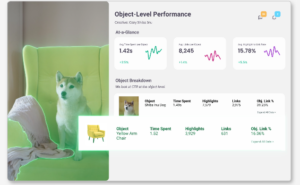by Stefan Tornquist, SVP, Research and Learning, Econsultancy
To help leaders set priorities for 2022, the research team at Econsultancy identified more than 50 trends that will impact digital marketing, customer experience and ecommerce over the next 12-18 months.
From this wealth of insight, we’ve focused in on five of the standout trends that will be influencing the market throughout the year.
The shift to first-party data
The retirement of the third-party cookie looms over digital marketing. Thousands of media and advertising infrastructure companies were built on the premise of cross-internet identification, and they are baked into the operation of every sizable marketing department and agency.
Brands are competing in a land rush for first-party relationships with prospects and customers, driving the boom in email newsletters, loyalty schemes and branded community activity. Inevitably, this will add bricks to the garden walls. While the news is full of the fallout from data skirmishes between the technology giants, their advantage in first-party relationships at a massive scale can only lead to higher premiums and fewer choices for advertisers looking for targeted media.
For marketers, the drive to acquire new first-party data must be balanced with an investment in keeping those relationships active and growing. Fallow newsletter subscriptions can’t replace the richness of the third-party data ecosystem. There’s a strategic imperative to becoming adept at farming audiences; maximising the yield of first-party relationships with content and service exchanges, progressive voluntary data profiling and the use of predictive technology to anticipate need without overwhelming the customer.
Hybrid work and the war for talent
The push for first-party relationships is contributing to an already pressurised jobs market for the digitally savvy. Companies trying to master their customers’ data and experience are in-housing roles that would have been supported by partners or outsourced entirely in previous years.
Add this to two years of pent-up energy among digital marketers wanting to change jobs and an exploding need for ecommerce – and the balance of power rests firmly with the employee until the market rebalances.
The new acceptance of remote work overlays the talent crisis, upending the geographic inertia and freeing people to seek brands with a culture or purpose they connect to. This can be an advantage for companies that aggressively support remote workers and where marketing is given the mandate to capture the corporate mission as narrative and treat current and potential employees as key audiences.
Smaller communities, greater engagement
Micro audiences are a macro trend. Growth in interest-based communities and niche marketplaces significantly outpaced even ecommerce across the pandemic. Gamers, craft lovers, professional circles…whatever the common thread, participants enjoy the authenticity, specificity and access to information that’s constantly and effectively curated. In the best examples, they also display feelings of belonging and an emotional attachment to the community as well as their network within it.
The value to brands is that a community of interest is heavily invested, self-declared and self-organising. Instead of having to guess at propensity, marketers have key information from the jump. Marketing into communities can play a role in building awareness, but the practice is ideally suited for the mid and late funnel, building trust with prospects and engagement with existing customers.
Direct to consumer (DTC)
The pandemic drive to digital was a new imperative and opportunity for manufacturers, pushing DTC from business media darling to vital revenue line. Companies that had an existing ecommerce business ready in 2020 were able to redirect their media spending to take advantage and weathered the year better than traditionalist competitors.
Sectors that had resisted direct sales embraced them, from luxury to cosmetics and even B2B. But as these new players flood paid channels, marketers will have to fight for more budget and resources to keep the traffic flowing and the experience compelling. The snap-back to offline channels we expect in 2022 will lead many companies to overcorrect, but in Econsultancy’s research, the most successful companies are committed to maintaining investment levels for digital experience.
Sustainability is a digital marketing issue
Consumer awareness of sustainability issues and brand stances has grown steadily in recent years but leapt in 2020/2021. Universal adoption of ecommerce led many to question the impact of world-spanning supply chains, home delivery of individual items and digital marketing itself. Some companies are grappling with the extent of their responsibility and obligations, but many aren’t anticipating the concerns of their markets or employees.
Forward looking brands such as Unilever, Philips and Chanel are using sustainability initiatives to their advantage as a spark for consumer messaging, cultural transformation and new hiring. Laggards will have to catch up and marketing should be pushing them to; it’s far better to devote time and resource to build a strategy than to have to respond to emergencies caused by not having one.









